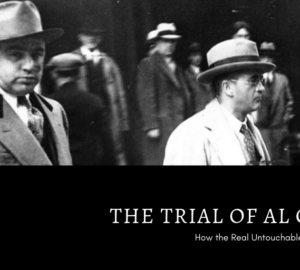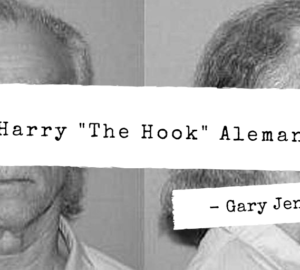In this third installment about Harry The Hook Aleman, a ½ Mexican ½ Sicilian Chicago Outfit hitman, enforcer, street tax collector, and the skipper of a home invasion crew, I will examine the case that will eventually bring Aleman to justice. This will be a long and crazy path so hang on and keep reading.
I mentioned earlier how much inside information on Aleman came from a Taylor Street crew member named Lou Almeida. Almeida was a small-time thug who went to prison for robbery and was released in 1970. After his release, Aleman gave him a $2,500.00 loan and brought Almeida into his crew. He even appointed Almeida as his personal driver. Almeida would later say, “He told me, `drive me and don’t get lost.’” Almeida said Harry was on a constant prowl looking for good scores and recruiting men to commit those crimes. Almeida claimed Aleman was also bragging that he wanted to be a hit man. Almeida once said, “I guess he had to announce to everybody that he was starting to kill people for money or kill people who didn’t listen to him.”
When asked if he thought Aleman really killed twenty people, Almeida replied:
“I don’t know. He liked to kill things. But sometimes, the police, if they didn’t know who did a hit, I think they would just put it on Harry.”
When asked what type of cars Aleman drove, he replied:
“I don’t know–you mean legit cars? I don’t know, everybody drove stolen cars.” “I used to get my ammunition from Harry,” and Almeida claimed, “He used to make his own ammunition in the garage of his house.”
Almeida said that he broke away from Aleman in 1974 after escaping what he believed was an attempted murder by Aleman and Inendino. To illustrate how volatile Harry could be, Almeida remembered an incident in 1972, when, standing outside Aleman’s Melrose Park home, Aleman told him he had just talked by phone with two of his robbery crew members and learned they had kidnapped a Hillside Policeman named Anthony Raymond, taken him to Wisconsin and tortured him to death.
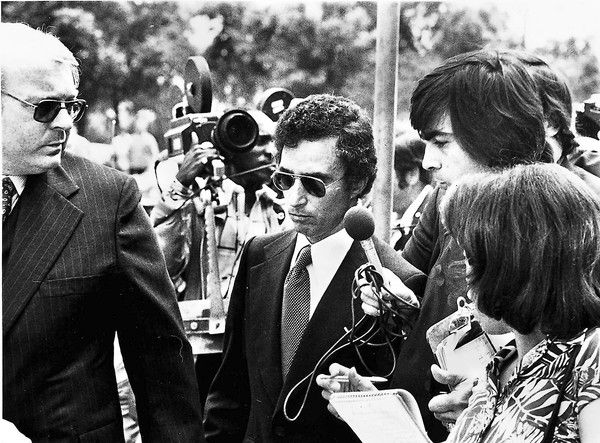
Almeida said:
“What are you telling me this for? I don’t want to hear it. I don’t want to be involved. That was one of my bigger mistakes. Harry didn’t like that. He just looked at me. I thought he was going to have me hit.”
Two years later in 1974, Almeida said he was sitting in the front seat of a car next to gangster Jimmy Inendino. Aleman remembers Harry was in the back seat and Harry put a gun to his head. Almeida said:
“I looked back and he put the gun down. He and Inendino started arguing and then it seemed Harry sort of forgot about it. The person we were there to shoot didn’t show up. I never really trusted him after that.”
Almeida recounted another incident and said:
“Another time, right after that, we were in an alley and Harry got out of the back and got a shotgun out of another car. He told me to look straight ahead.”
Almeida recalled,
“All I could see was windows with white shades drawn down. I really believed he was going to try to hit me. I left, and I went my own way.”
An FBI agent once said,
“You don’t want to go for a drive and see Aleman in the back seat.”
As an aside let me tell you about this murder of a Hillside Illinois cop. Hillside is a small suburb just west of Cicero. There was an arrest and conviction in this case and we talked about it in the story of the corrupt Outfit connected Chicago cop named William Hanhardt. He said he had an informant who identified the three suspects and he was able to find the body. Hanhardt claimed these men had robbed the Swedish Manor Restaurant and minutes later, Officer Raymond stopped them on the Eisenhower Freeway. He his informant alleged these suspects got the drop on the officer, handcuffed him and stuffed him in their trunk, leaving the police car by the road. This description would turn out to be true. They later stabbed Officer Raymond to death and buried his body on the farm of a suspect’s relative. With Handardt’s information and other p\physical evidence, prosecutors were able to convict Robert Martinez and Silas Fletcher of aggravated kidnapping and the subsequent murder of Hillside police officer Anthony Raymond.
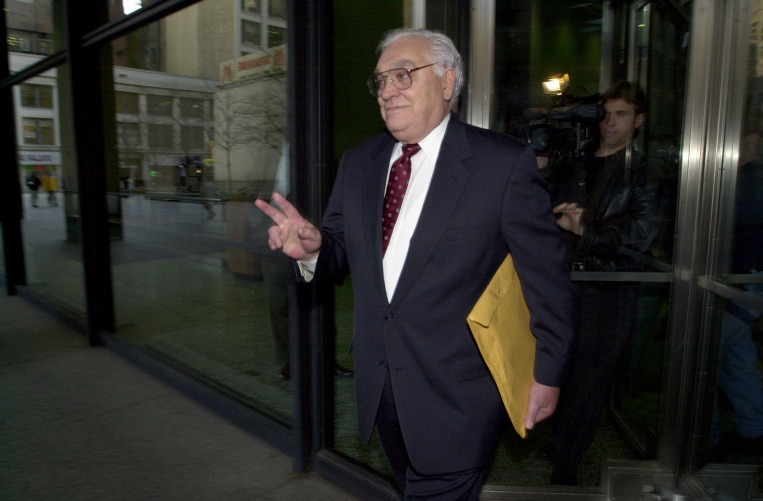
In a case unrelated to Harry Aleman, in 1977 Ohio state police stopped Louis Almeida and found a loaded pistol with a silencer. It appears that Almeida was going to be charged with a number of crimes and he eventually started cooperating to avoid a long prison sentence for murder conspiracy and firearms charges out of Ohio. The court sentenced him to 10 years in prison where he attempted suicide. He began cooperating with the government shortly afterwards, cutting a deal for early release and entry into the witness protection program.
Lou Almeida had a story to tell and it will end in Outfit history being made. His information will lead to the first time ever that a person was tried twice for the same crime by the same jurisdiction. The 1972 murder of Billy Logan was number 2 on the Aleman hit list. He participated in this murder shortly after he killed the guy called “Sambo.” This was the guy who married the former girlfriend of “Milwaukee Phil” Alderisio.
According to Almeida, Teamster’s steward Billy Logan refused to cooperate with the Outfit’s plans to steal cargo from trucks and Aleman was sent to kill him. Almeida said that in August of 1972, he and Harry trailed Logan to learn his habits and schedule. As our friend Frank Calabrese Jr. would say, “He layed on” Billy Logan for 2 weeks. Louis Almeida learned that Billy Logan dove a taxi during the day and returned to his sister’s house for dinner and then left at 11:00 PM every evening for his Teamsters’ union job as a dispatcher with Interstate Trucking in Cicero.
To illustrate just how active a criminal Harry Aleman was, Almeida testified that 11 days before the murder, on Sept. 16, 1972, Aleman directed Almeida and another crew member to burglarize a home in suburban Oak Lawn where Aleman believed $40,000.00 in cash was kept in the basement. But after tying up a woman in the home and terrorizing her baby, Almeida and his companion left with only $1,800.00 and some jewelry. A few nights later, on September 27, 1972, Almeida drove Aleman to the home of Logan’s sister and the two killers parked in the dark and waited for 11: PM. By this time, Harry knew that Billy Logan stayed at his sister’s house and left for a second job at 11:00 PM every evening.
Billy Logan, then 37 years old, had grown up on Chicago’s Near West Side, an area known as “Little Italy.” He lived on the second floor at 5916 W. Walton St. with his sister, Betty, who was divorced. His sister, Joanna, and her children, lived on the first floor. Logan, a part time cab driver, awoke for his second job on the night shift at Interstate Trucking, dressed and stopped to say good night to his sister. Logan’s nephew William Dietrich was on the front porch and watched his uncle walk across the street to his parked car and then heard a voice say, “Hey, Bill, come here.” Almost simultaneously, three gunshots rang out: two from a shotgun, a third from a pistol. He heard his uncle yell out “Oh, my God,” Logan’s sister Betty raced out the street where he lay dying. “He was still alive. He mumbled something. His keys fell. Betty held his head and refused to let it go crying, “I don’t want his head on the ground.” One witness described this as like a scene in the movies.

A neighbor named Bob Lowe was walking with his dog up to the scene because he wanted to catch Billy before he left for work. He wanted to sell the dog to Logan as a watch dog. He would say that Billy was like clockwork, he left for his second job every night at this time. He was within a few feet and stared directly at the face of Harry Aleman as he shot down Logan, jumped back into the getaway car and left. Lowe did not want to be a witness in the case. Right after he saw the shooting, he said his father told him it was possibly a Syndicate killing and “to shut up and get inside” the house. When the police interviewed him that night, Lowe never volunteered that he saw the murderer. This will cause some problems later in trial. Bob Lowe kept worrying about what he knew and felt that he had a responsibility to speak up.
He would say,
“I didn’t feel it was safe for my kids on the street. Did you ever watch a horror movie? You’d be sleeping, and then parts of that movie would come back and scare you? Well, this was the same way. I’d be trying to sleep, and I would see that face. I was always looking behind me, looking for a car to pull up alongside me.”
Three months after the murder, Lowe went to the police and, after examining photos, picked out Harry Aleman, although he had no idea who Aleman was or that he was suspected in taking part in at least twenty mob murders. Despite the positive Identification the Chicago police did not bring a case against Aleman. Later when the State’s Attorney checked on the progress of the case, first the cops claimed that Lowe was lying and that he had not come into headquarters and no one showed him photos. They later changed the story and claimed they had lost the report on Lowe’s identification.
During the investigation some corrupt Chicago cops tried to steer investigators away from Harry by starting the story that Logan was killed because he was involved in a bitter custody battle with his ex-wife, Phyllis. She would testify that after divorcing Logan, she had had an affair with Aleman’s crime partner and fellow member of the Taylor Street crew Butch Petrocelli. A jealous Billy Logan had a fist fight with Petrocelli and made threats about making Petrocelli miserable. When his wife warned him to stay away or she would ask Petrocelli and Harry Aleman, her second cousin for help. Reportedly, Billy Logan replied “Fuck those guineas.”
In 1977, 5 years after the Billy Logan murder, Cook County Assistant State’s Attorney Nicholas Lavarone found Bobby Lowe and got him to cooperate in the case and agree to testify. But, understandably, when Lowe found out who Aleman was, he backed out. Lowe’s father urged him to stay away from the case. However, his brother, who had been shot in a gas station holdup and later was helped by a witness who agreed to testify for him, told him “think for yourself, be your own man.” Lowe agreed to be a prosecution witness.
He was forced to leave his job as a gas station manager and give up his apartment. The family was put under 24-hour guard. He was given a $250.00 a month allowance by the state and the strain began to show and his second marriage started to come apart. Billy Logan lost weight and couldn’t sleep.
The case came to trial in May 1977 before Cook County Circuit Judge Frank Wilson. Aleman’s defense attorney asked for a bench trial and there was no jury. On the witness stand Bobby Lowe testified “Me and that man (Aleman) just stared at each other.” They were perhaps four feet apart. Louis Almeida testified that he drove Aleman to the murder scene and watched him kill Billy Logan and drove hm away. Aleman presented 4 witnesses, including his wife Ruth, claiming that he was at a golf driving range at the time of the murder.
Remember, Bobby Lowe said he did not see the killer the night of the shooting and then came in later and identified Aleman from a mug book. As Judge Wilson began to read the verdict, he said he had been a judge in criminal court for over 10 years and he had twice sentenced men to die in the electric chair. The judge, in his statement focused on Lowe’s first statements on the night of the murder and said “the policemen wrote them down and then Lowe denied on the stand that he said those things, and because of that variance in his testimony causes great doubt. The first statement is inherently more trustworthy than testimony from the stand. I find the state has fallen short of its burden proving the defendant guilty beyond a reasonable doubt.”
Judge Frank Wilson gave one statement to the press and then refused to talk again, he said,
“My decision was not a popular one and I do not say that at this time that he is innocent. That is between him and his God.”
The prosecutor, Nick Iavarone, said ‘It was incredibly frustrating. I convicted people on half the evidence that we had for this case.’ A Chicago police Commander stated, “Without people like Bobby Lowe, there is no way law enforcement can break up that animalistic organization called a crime syndicate.” Billy Logan’s sister, Joanna Dietrich told reporters, “If they let him walk the streets, nobody will ever come in as a witness again.”
The state of Illinois gave Lowe and his family new identities and moved them to another undisclosed location. When asked if he was sorry for what he did Lowe said, “No. If there would be a new trial, I would testify again. I stood up for what I believe.” Lowe began drinking heavily and committing petty crimes. He would get caught and spend two years in prison. He eventually overcame his addiction and reunited with his family.
The FBI believe that several days after Aleman was acquitted, this prolific killer took part in the murder of Joseph Theo, a burglar involved in the stolen auto parts business. Harry Aleman would go on setting up burglaries and home invasion robberies for his crew. He would be convicted on those crimes in 1978.
In March of 1989, Aleman was paroled after serving nearly 11 years of a 30-year sentence for the home invasions. Outfit boss Joe Ferriola, his uncle, had left Aleman $100,000 in his will shortly after Aleman’s release from federal prison. He moved in with family members in Oak Brook. He began working in his son-in-law’s concrete cutting business, Accurate Coring Company, 825 Seegers Rd., Des Plaines, as the personnel manager and would later describe the next nine months as “the best time of my life.” “We were whole again,” his wife Ruth said. “We cooked together, shared meals–years ago, Harry taught me how to cook, how to make the gravy for the meatballs.”
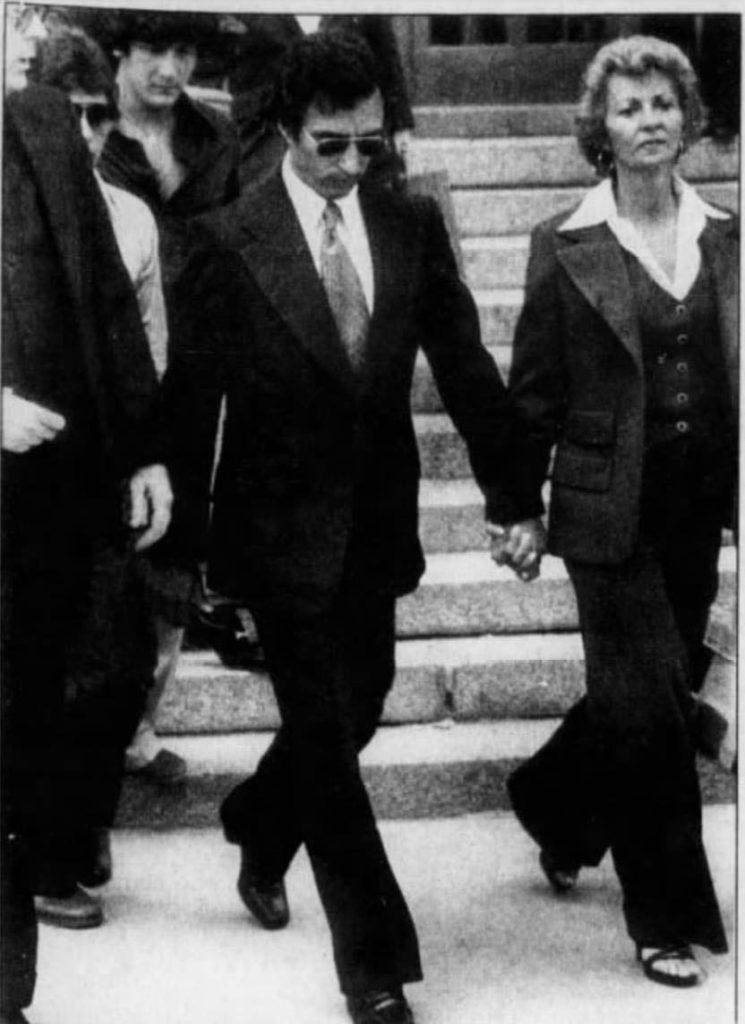
Aleman wasn’t free for long. In 1990, Aleman, Rocco Infelice and 18 others, essentially the entire Ferriola crew, were charged with using bribery, beatings and murder to run and protect the Outfit’s multimillion-dollar gambling, extortion and juice loan operations. The primary witness against them was a mob gambler named Bill Jahoda. The charges against Aleman involved extorting money from two bookmakers whose betting operations competed with the Ferriola-Infelice family. Aleman pleaded guilty in return for the negotiated sentence. Given time already spent in custody, Aleman was sentenced to 8 years in prison. Aleman, an accomplished artist, asked the judge to send him to the federal prison near Oxford, Wisconsin, so he could pursue his painting hobby. The judge agreed. Aleman said, “I have been in Oxford before and enjoyed the artwork there and that as prison painting programs go, Oxford’s ranks among the best for landscape and still life.”
I asked around on the several different Chicago Outfit Facebook pages and learned that many folks have seen his paintings hanging in a mob restaurant that is no longer in business. I could not find anybody to post an example of an Aleman painting.
We are at a midpoint in the career of Harry The Hook Aleman feared Outfit enforcer and hit man. He has survived a murder trial and continued his Outfit career. He spends less time outside of the joint because of his activities, but in the later 1990s when he is about to be released again from the most recent conviction for extortion when he gets some bad news. It seems that the government has learned that the Billy Logan murder trial judge was bribed, and the government is planning on taking him back to court. He believes he is immune from prosecution because of the United States Constitution’s protection against double jeopardy or being tried twice for the same crime.
Come back for the 4th and final episode in which we will talk about the second trial for the murder of Billy Logan.
- The Trial of Al Capone – How the Real Untouchables Brought Him Down - March 24, 2019
- Harry “The Hook” Aleman: Chicago Outfit Enforcer (Part 4) - January 17, 2019
- Harry “The Hook” Aleman: Chicago Outfit Enforcer (Part 3) - January 10, 2019





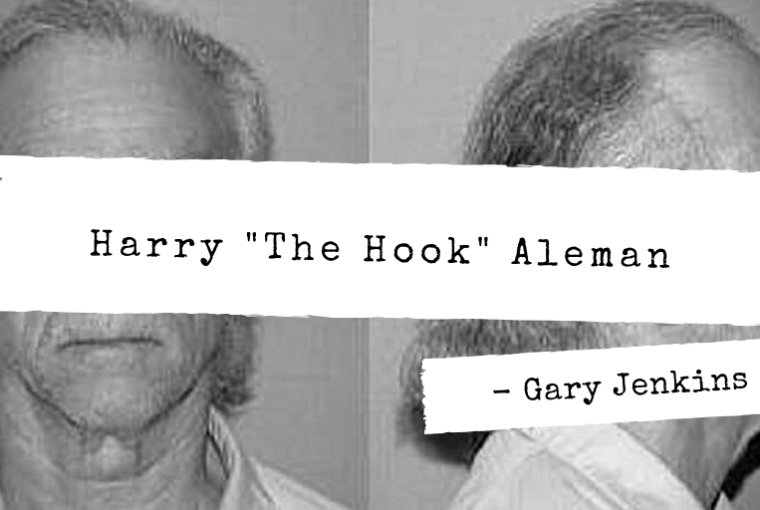
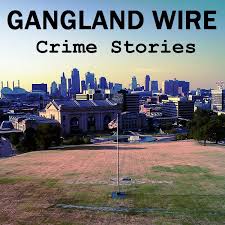 Part 1
Part 1